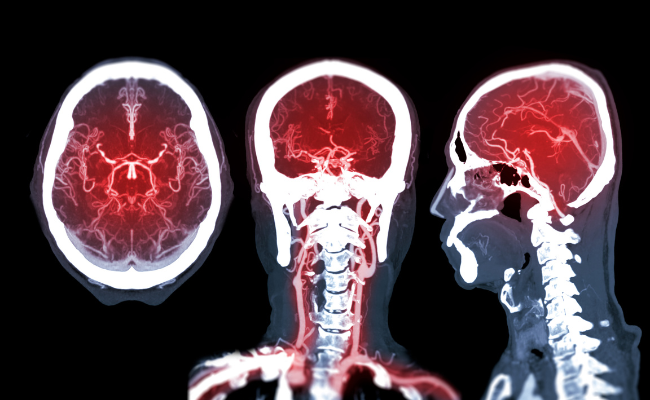How to Treat Brain Aneurysm?
- October 30, 2023
- No Comments

What is a Brain Aneurysm?
A brain aneurysm, or cerebral aneurysm, poses a potential life-threatening risk due to a weakened or bulging spot on a brain blood vessel. This bulging can lead to vessel ballooning and potential rupture, causing severe complications, including hemorrhagic stroke. Factors such as high blood pressure, smoking, and a family history may contribute to their development.
In the case of a cerebral aneurysm, a weakened artery segment near the brain forms a blister-like swelling due to continuous blood flow. As blood accumulates, the aneurysm stretches, akin to an inflating balloon becoming more susceptible to bursting.
While brain aneurysms can occur anywhere, they are more common in major arteries at the skull base, underlining the importance of recognizing the vulnerability of these arteries to aneurysm formation.
Why is Treating Brain Aneurysm Crucial?
Treating a brain aneurysm is crucial because the rupture of an aneurysm can result in a life-threatening condition. When an aneurysm ruptures, it causes bleeding in the brain, leading to a hemorrhagic stroke. The consequences of a ruptured aneurysm can be severe, including permanent brain damage, neurological deficits, or even death. Therefore, prompt and effective treatment is essential to prevent the rupture of a brain aneurysm.
How is Brain Aneurysm Treated?
- Observation and Monitoring: In some cases, particularly if the aneurysm is small and not causing symptoms, doctors may choose to monitor it closely without immediate intervention. Regular imaging tests, such as MRI or CT scans, are used to track the size and changes in the aneurysm over time. This approach is often employed when the risks associated with treatment outweigh the potential benefits.
- Medication: Certain medications may be prescribed to manage risk factors associated with aneurysm formation or rupture. For example, medications to control high blood pressure may be prescribed to reduce stress on the weakened blood vessel walls. Additionally, anti-seizure medications may be recommended in some cases.
- Endovascular Coiling: Endovascular coiling is a minimally invasive procedure that involves threading a catheter through the blood vessels to the site of the aneurysm. A tiny coil is then released into the aneurysm, promoting blood clot formation and sealing off the weakened area. This method is effective for certain types of aneurysms and generally involves a shorter recovery period compared to open surgery.
- Surgical Clipping: Surgical clipping is a more invasive procedure that involves opening the skull to access the aneurysm directly. A small metal clip is placed around the neck of the aneurysm to stop blood flow into it, reducing the risk of rupture. While this method may require a longer recovery time compared to endovascular coiling, it is a viable option for certain aneurysm types and locations.
Treatment Solutions for Brain Aneurysm:
- Individualized Approach: The choice of treatment for a brain aneurysm is highly individualized and depends on factors such as the size and location of the aneurysm, the patient's overall health, and the potential risks associated with each treatment option. A collaborative decision-making process involving the patient, their family, and a multidisciplinary medical team is essential to determine the most appropriate course of action.
- Risk Factor Management: In addition to the specific treatments mentioned, managing risk factors is a crucial aspect of treating brain aneurysms. This includes lifestyle modifications such as quitting smoking, maintaining a healthy blood pressure, and adopting a heart-healthy diet. Controlling these factors can contribute to the prevention of aneurysm formation and reduce the risk of rupture.
Benefits of Treating Brain Aneurysm:
- Preventing Rupture: The primary benefit of treating a brain aneurysm is the prevention of rupture. By addressing the aneurysm through monitoring, medication, or interventional procedures, the risk of life-threatening complications such as hemorrhagic stroke is significantly reduced.
- Preserving Neurological Function: Timely treatment can help preserve neurological function and minimize the risk of permanent brain damage. Ruptured aneurysms can lead to cognitive impairment, speech difficulties, paralysis, or other neurological deficits. By addressing the aneurysm before rupture, the likelihood of these complications is diminished.
- Improving Quality of Life: Effective treatment can contribute to an improved quality of life for individuals with brain aneurysms. By managing risk factors, undergoing appropriate interventions, and adopting a proactive approach to health, individuals can enhance their overall well-being and reduce the impact of the aneurysm on daily life.
Comments (0)